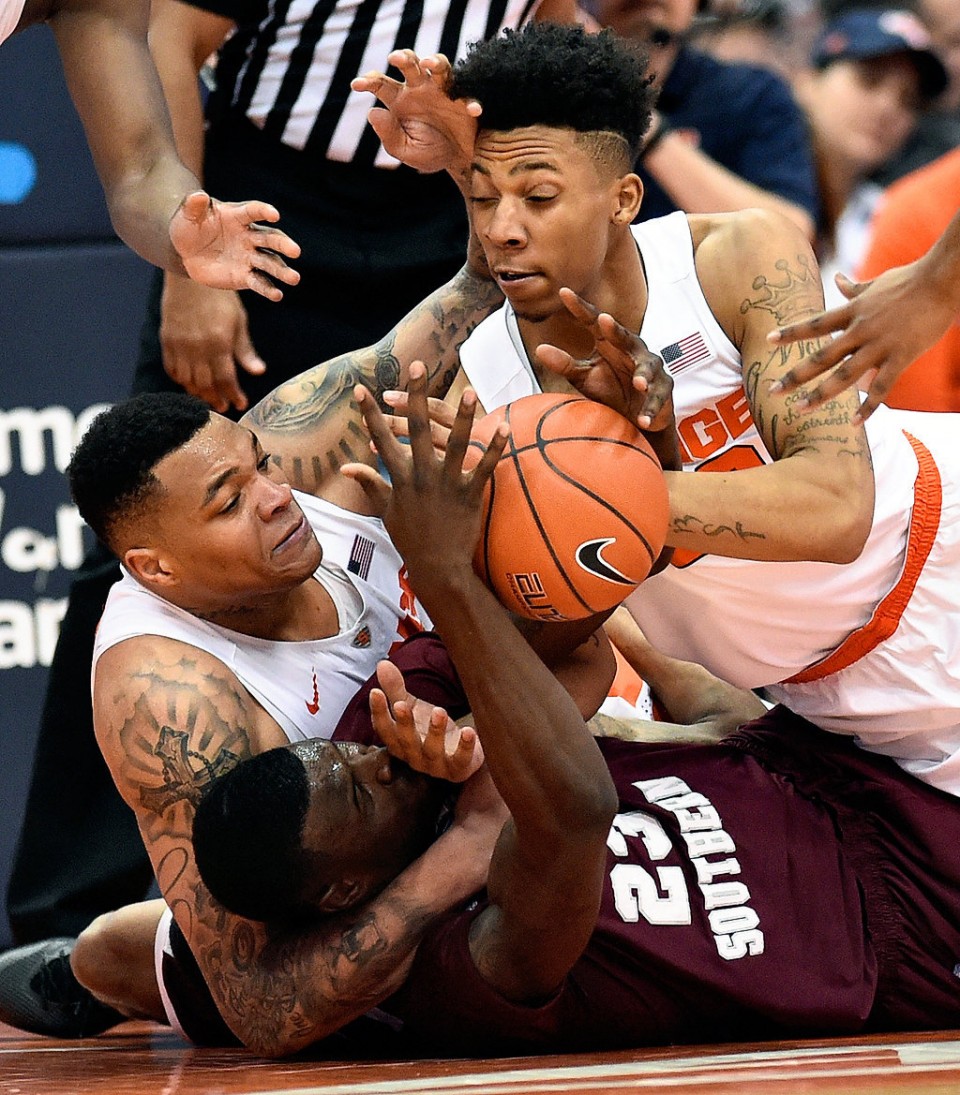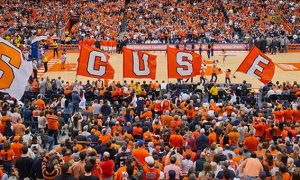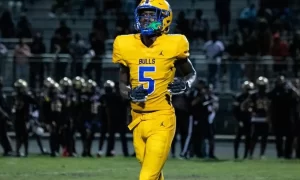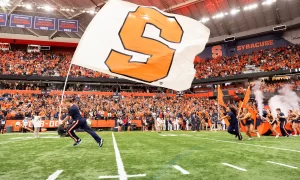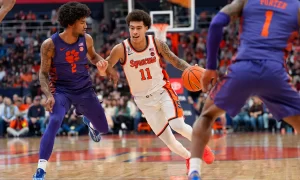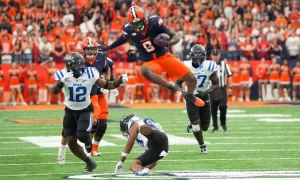In life, nothing can be certain except death and taxes. In Syracuse basketball, nothing can be certain except Jim Boeheim and the 2-3 zone.
We’ve had to live without one of those certainties for the last month, but on Wednesday at 12:02 AM Coach Boeheim was reunited with his team and his defense. The zone has taken its shots over the years, and certainly showed its fair share of weaknesses over the life of Boeheim’s suspension, but it’s also easy to take for granted everything the zone does right. Whether you’re for or against using the zone, here’s some numbers you can throw around during your next heated debate around the water cooler.
The Pro-Zone Argument
If you like the zone, you’ve got a lot of ammo. Jim Boeheim’s rendition of the 2-3 has over time gained the reputation of being one of the best defenses in college basketball, and for good reason.
Syracuse is giving up 65.2 points per game this season (40th of 351 schools), which means that on an average night the Orange only has to score 66 points to win. Syracuse is averaging just over 70 per game this year, but with this offense you never know when Syracuse will and won’t be able to score any amount of points. On some days Syracuse puts up 79 against UConn and on others it’s struggling to get to 51 at Miami, but that’s not the zone’s fault.
Another advantage of the zone: it forces lower percentage shots. 33.6 percent of opponent’s points have come from behind the arc this season, but that’s just a function of the 2-3. Orange opponents have one of the highest rates in the country at 23.8 three point attempts per game (Syracuse shoots more, of course) and are only shooting 30.8 percent on those threes. Syracuse would much rather let you take a few more threes and make it harder to get inside, which makes sense.
The zone also slows the game down, which in turn keeps games close. Syracuse gets 68.6 possessions per game, which is 308th in the country, and opponents are only shooting 17.4 percent of their shots in transition. Less possessions and slower play means less chances for a team to go on a run and expand a lead. We’ve seen the zone keep Syracuse in a game plenty of times when the offense couldn’t seem to hit anything (Miami, Clemson, Pitt, etc.), and it looks like the Orange is going to need to zone to slow things down a few more times before the season is done.
The Anti-Zone Argument
Let me start this with a disclaimer: nobody doesn’t like the zone. Your everyday angry internet commenter might say it’s time to throw it out the window, but deep down the 2-3 is just as much a part of Syracuse as the color orange and the frigid winters that make it impossible to grow actual oranges. There’s just some of us (myself included) that think no single defense works all the time; man-to-man, zone or otherwise. There’s two sides to every story, though, and you can find just as many numbers to go against the 2-3 as the ones you can find for it.
The zone haters will tell you Syracuse’s low points against is only a factor of the slower pace of play. Syracuse’s 65.2 points allowed per game is 40th in the country, but the Orange’s defensive efficiency is only 81st in the nation. Syracuse only scores 70.8 points per game itself (199th), so the zone definitely alters those aspects of defensive stats to an extent.
The 2-3 also relies on communication much more than a man-to-man defense. Players have to be on the same page at all times and know their rotations or everything falls apart. I’m not saying the players don’t talk to each other or that Boeheim doesn’t do a good job of making sure everyone knows their role, but it’s definitely harder to communicate in a hostile road environment, and the numbers show it. Syracuse is giving up 59.1 points per game in the Carrier Dome, but 73.1 while playing as the visitor.
Maybe the biggest argument against the zone is that it’s easily beat. If you can get the ball in the middle you’re never more than a pass away from a good look, and it doesn’t take an expert coach to know that. Syracuse counters this by playing so high up on defense that the high post is taken away and the only hope of getting an easy bucket is threading a pass backdoor. But other teams seem to be picking up on this, and have been able to be more successful against the zone as games go on. The opposition is scoring just 27.8 points per game against the Orange in the first half (11th best in the country), but Syracuse allows 35.9 points per game in the second half (97th in the country). When teams are able to find a hole in the zone, players like Clemson’s Jaron Blossomgame put up 20.
Whatever your view on Syracuse’s 2-3 zone is, hopefully now you’re ready to drop some knowledge on the next person to tell you you’re wrong.
Statistics from TeamRankings.com
Posted: Nathan Dickinson


